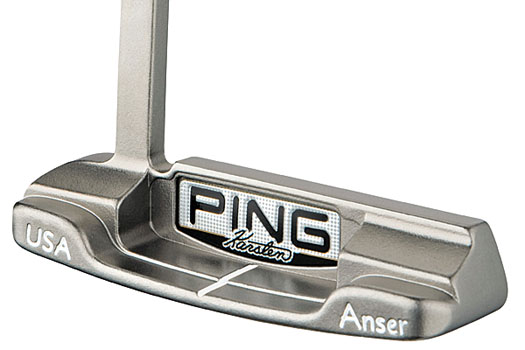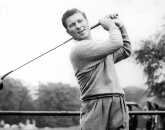
PING Anser Putter
Frustrated by the selection of available putters on the market, Karsten Solheim, a Norwegian-born engineer for General Electric, decided to design one of his own. The result? A heel-toe weighted blade that increased the sweet spot and produced a "ping" sound at impact. Called the PING 1-A, the blade debuted in 1959 and was his fledgling company’s first product. Seven years later Solheim had his first big hit.
Originally sketched on a record sleeve (with the hole used as a golf cup reference), the PING Anser putter was designed as a literal answer to the putters PGA Tour players were using at the time. Finding a name for it proved to be a bit more difficult. "The night before the putter was due at the engraver, he still needed a name," John A Solheim, Karsten’s son and PING’s current Chairman and CEO has said. “[My mother] suggested ‘Answer.’" The word 'Answer' didn’t fit on the back of the blade, so Solheim omitted the "w" and golf’s most influential putter was born.
Still, players didn’t gravitate to it overnight. Julius Boros used it to win the 1967 Phoenix Open but things really took off after 1969 Masters champ George Archer triumphed at Augusta with one in the bag. Forty-four years later the Anser is golf’s most successful putter, with over 500 tournament wins.
Solheim’s patent expired in 1984, and dozens (if not hundreds) of Anser-style putters have flooded the market, most notably Scotty Cameron’s premium designs. Tiger Woods has used the PING model, a Cameron homage and currently plays with a Nike Method look-a-like.
Have an old Anser lying around? It’s a collector’s item. Early versions can fetch anywhere between US$1,500-4,000.
Pages
Click here to see the published article.











